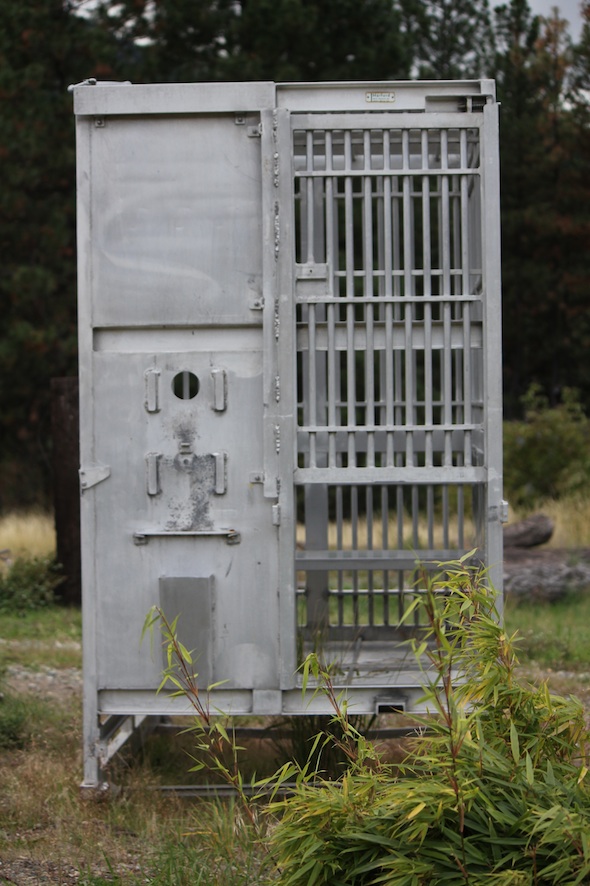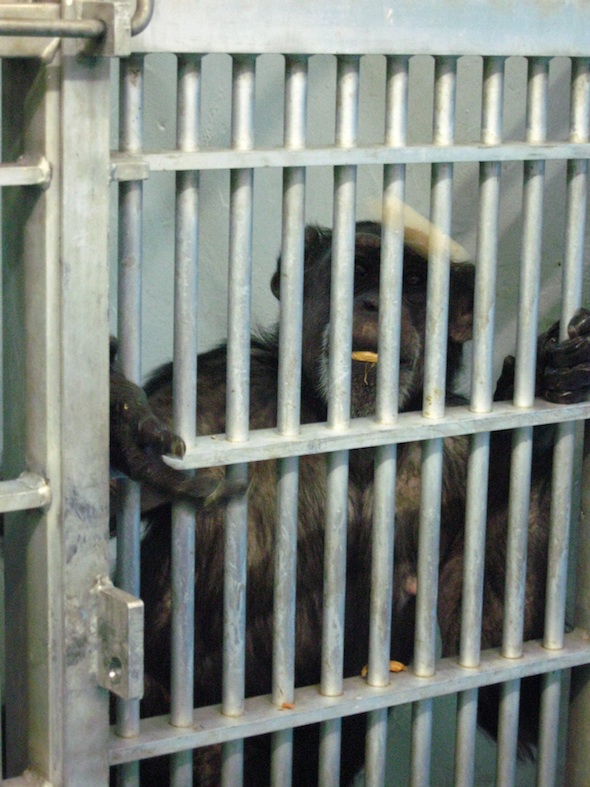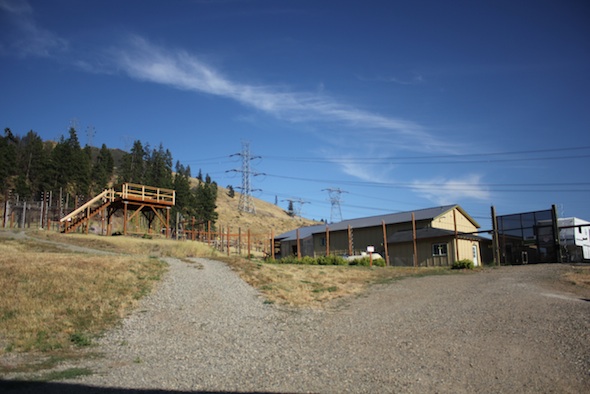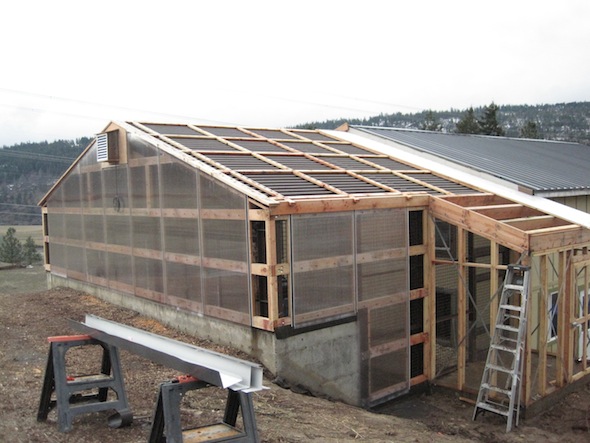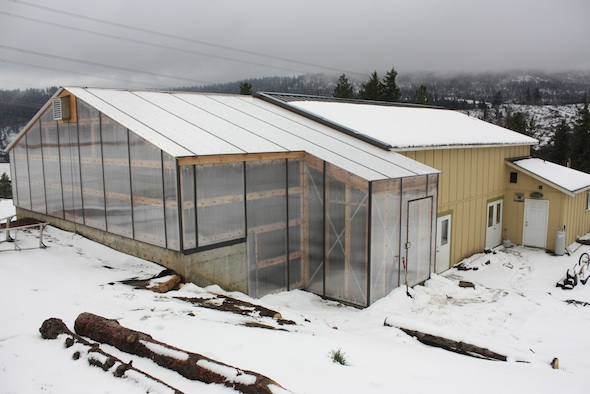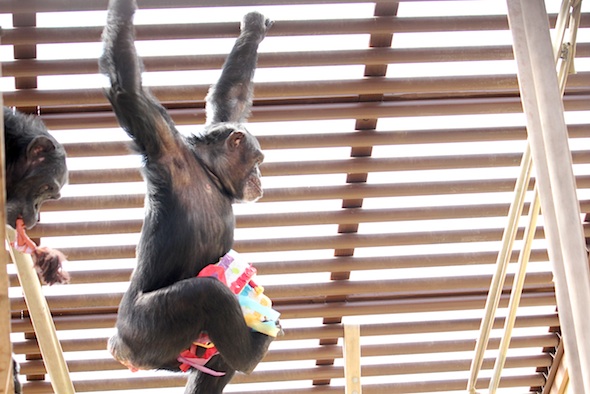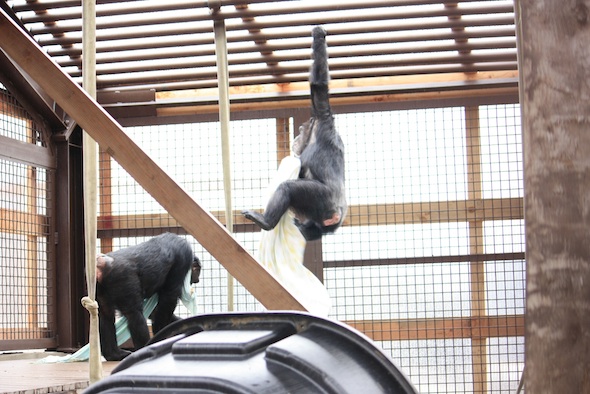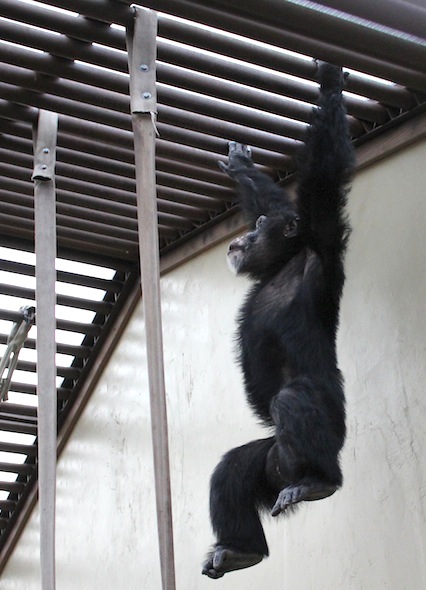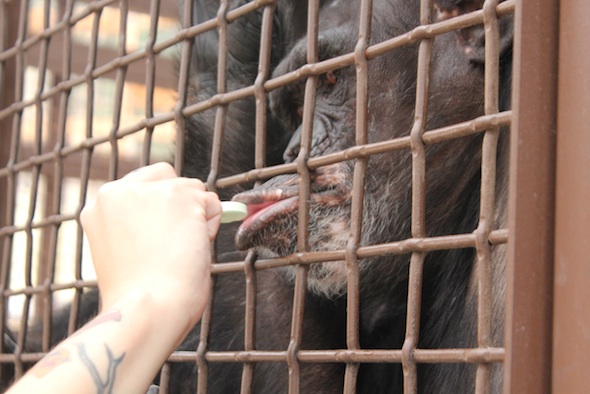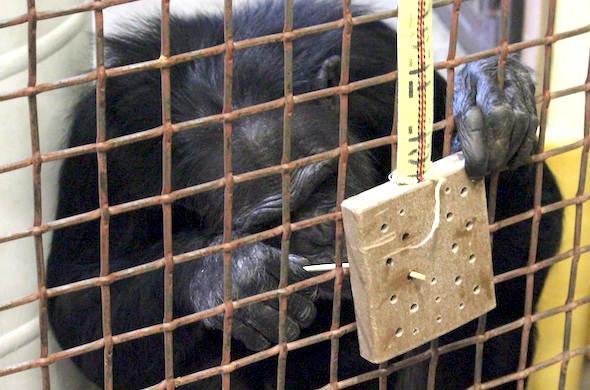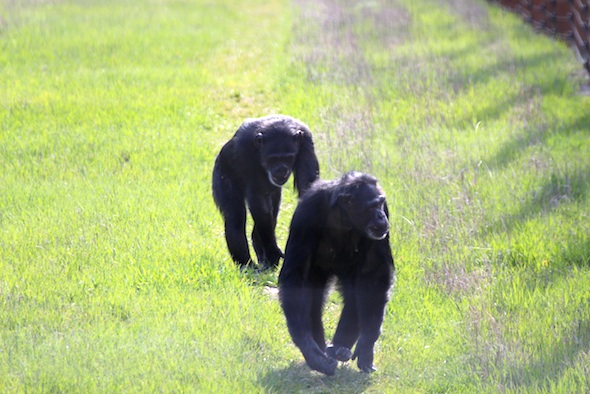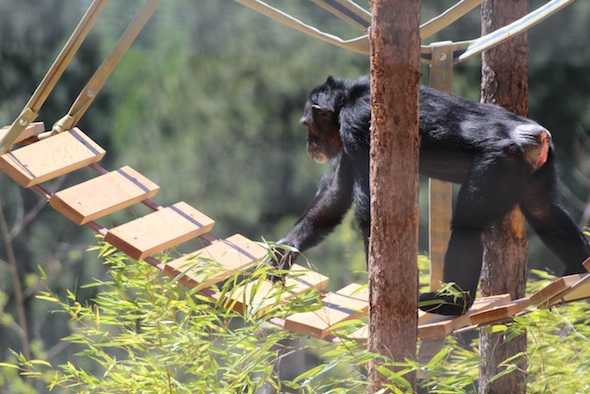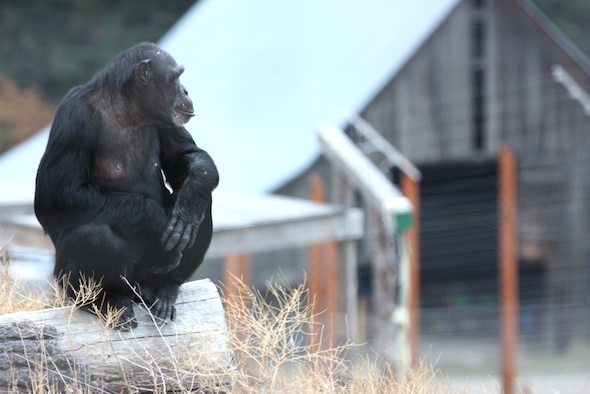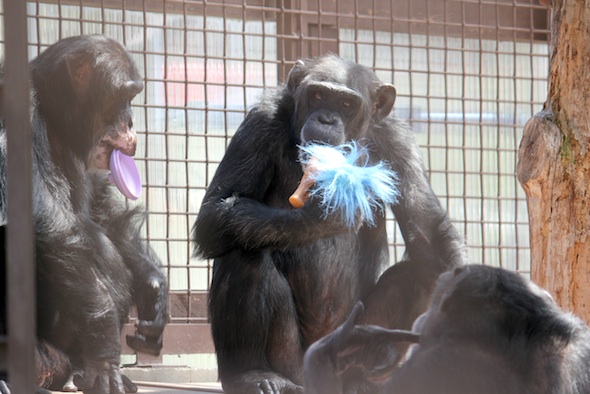You may have heard that Foxie has become a bit of a celebrity due to this The Dodo article and a follow up story and video on the Huffington Post.
Publicity for the sanctuary is so wonderful! New amazing people with gigantic hearts find out about the work we do and all of the chimpanzees in our care, and the world overall becomes a better place with more like-minded people connecting with causes that speak to them.
And then there are the comments on the internet…
As a general rule, it’s a bit disheartening to read internet comments, no matter the subject, but when people are commenting on something so close to your heart and making assumptions that are wildly inaccurate, it can sting.
However, it can also be somewhat enlightening.
One theme to the comments of late has been questioning why Foxie is “still in a cage.”
Here’s the truth about keeping chimpanzees in captivity – you have to put measures in place to contain them in order to keep them and the humans safe. And captive facilities, whether labs or zoos or sanctuaries, utilize concrete and steel to some extent.
Below is a photo of the type of cage that most of the chimpanzees living at Chimpanzee Sanctuary Northwest spent years and years living in while in laboratories:
This is their sanctuary home now (the building and the hill inside the electrical fence):
I am here to tell you right now that some of the enclosures at the sanctuary are primarily caging.
The next few photos are of the greenhouse, which is the chimpanzees’ favorite area year round. It is basically a large cage.
The greenhouse was the chimpanzees’ original “outdoor” area, and was caging that was open to the elements. Greenhouse panels were added to make it a usable space year round. Here are the panels going up:
And here is what it looks like in the winter. It’s pretty toasty in there when there’s even a little bit of sun to heat things up.
The greenhouse is an incredibly usable space – chimpanzees, being strong and dexterous and having opposable toes, can easily climb up the walls, and the ceiling is made up of bars where they can hang from and brachiate, whether just to get across the room, when absconding with a prize, during play, or just for fun. I wish all enclosures could be as usable.
The caging also allows caregivers to directly interact with and serve the chimpanzees (unlike other methods of containment that we also use at the sanctuary such as electric fencing and bullet-proof / chimp-proof glass).
Caging is also handy for hanging food puzzles, like this raisin board that Jamie enjoyed tonight:
But take another look at that photo above of Jamie with her raisin board.
If you didn’t know that this:
and this:
and this:
was also a part of Jamie’s everyday existence, what would you think?
We considered this when we started the blog before the chimpanzees arrived. Would we avoid posting photos of the chimpanzees behind bars, or play sessions that were filmed in the smaller front room area? We decided we would share it all, with the idea that those who were truly concerned or curious would look into things further, find out more, and then, of course, fall in love with the chimpanzees.
And for those who simply made an assumption about the sanctuary and never delved further, well, maybe they weren’t our “target audience.”
So, for those who are reading this, thank you. Thank you for taking the time to learn and wonder and question and care.
Anyone who works at Chimpanzee Sanctuary Northwest will tell you that our ultimate goal is to put ourselves out of business. We don’t like the fact that there is a need for sanctuaries for chimpanzees. We don’t like the fact that there are chimpanzees in captivity anywhere.
We don’t want our chimpanzee friends to be living behind bars – we want them to be wild and free in their native habitat. But that is not possible. As we explain on our FAQ page, there are many reasons why captive chimpanzees in North America cannot be released into the wild, but one of the most significant reasons is that chimpanzees rely heavily on cultural knowledge for survival in the wild. Having been raised in captivity, the chimpanzees at CSNW lack the most basic skills for survival such as finding and procuring food and protecting themselves from the dangers of their environment.
We wish that Foxie had been born in Africa into a huge and thriving population of chimpanzees. We wish that she had children and grandchildren that surrounded her and enriched her life. But she was born in a laboratory. And that is tragic.
What we get to do, though, is tell the other side of her story. The story about her falling in love with troll dolls, and being the 98-pound mediator within her group of chimpanzees, and playing wild games of wrestle and troll keep-away with Jamie.
Some of this is done on the other side of steel caging, and we will continue to show those moments.
